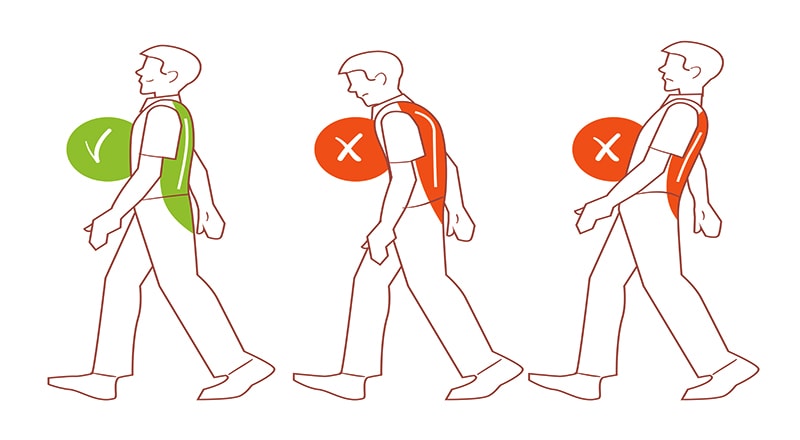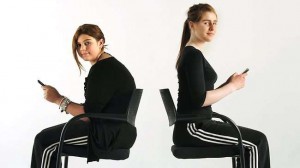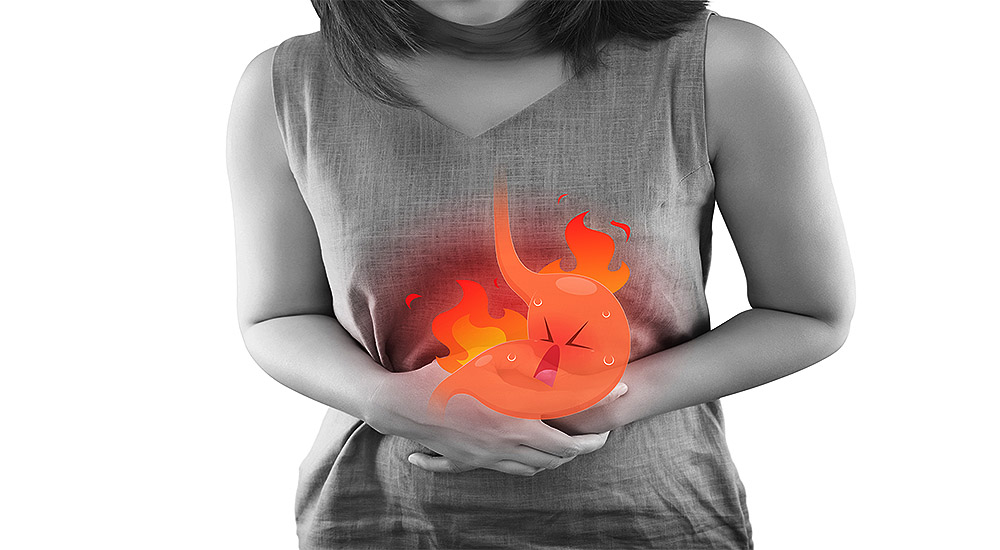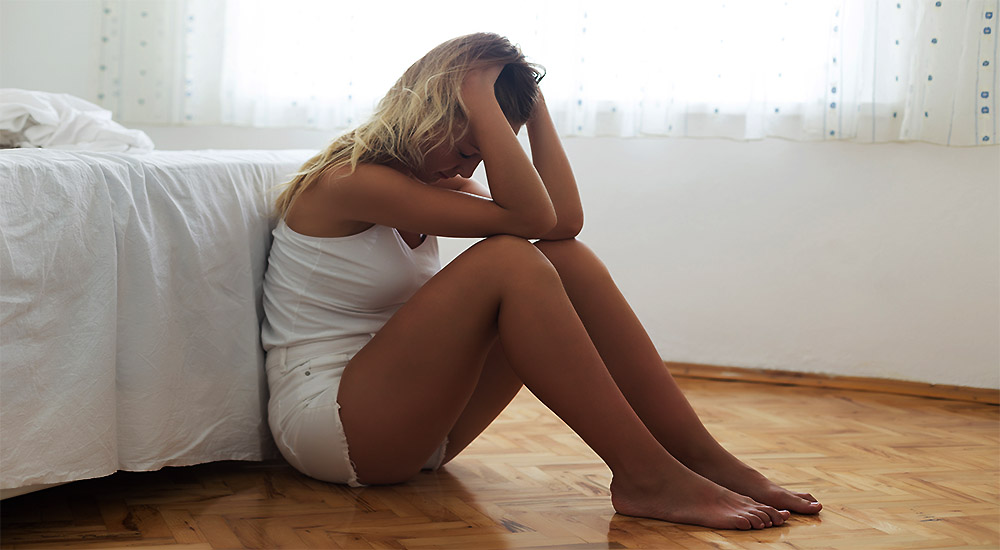Disturbing Trend – Poor Posture in Children

Poor Posture is on the Rise

As a doctor of Physical Therapy, this concerns me greatly. Read on for causes and solutions. You can identify a child with bad posture by his droopy shoulders or his forward-tilted head, which causes the upper part of the neck to slightly protrude out ahead of the body. This in turn causes increased arching at the low back region which can lead to foot imbalances often seen as pigeon-toed. It is a vicious cycle.
Some Reasons Why Poor Posture Occurs
The reasons for poor posture are plentiful. I am going to review some common ones:
Backpacks – You can recognize when a child’s backpack is too heavy if she has to lean over while wearing the pack in order to maintain balance. Researchers state that a backpack should be no more than 10 percent of your child’s entire body weight. For children under 10 years of age, the backpack’s weight should be closer to five percent of your child’s body weight.
Children’s Hospital in Boston reports that children compensate for the excessive weight by leaning forward and tilting their necks upward, a posture that can not only cause chronic back pain but one they may begin to unconsciously assume even when they’re not carrying a pack.
The American Academy of Orthopedic Surgeons indicates carrying a load weighing more than 20 percent of his body weight subjects a child to serious spinal problems. Parents, feel free to share this data with your schools.
Electronic devices such as video games, computer games, laptops, cell phones, iPads – Children are inundated with these devices but they aren’t being taught good posture when utilizing them. Additionally, the time they spend can be excessive. Most kids play computer games anywhere from one to two hours or more per day and this rises over the weekend.
Most of the time they are slouched over their devices or are in other poor ergonomic positions as they lie on the couch, floor, or hunch over the kitchen tables.
To take this to an unfortunate extreme, there was one scary incident in Japan where a teenager spent so much time playing his video game that he developed blood clots in his legs and had to get one leg amputated.
Parents, please monitor the amount of time your child spends with these devices and observe their posture.
Car Seats, strollers, faulty beds, and mattresses– Long before children start carrying backpacks or playing computer games; they’re forced into car seats and strollers that can play a major role in the development of later postural problems.
Babies teach themselves how to sit up by planting their weight on that part of the pelvis that puts a bone called the sacrum (the triangular bone at the base of the spine) at the correct angle to support the spine. This position allows the spine to align itself along the vertical axis of gravity such that it can support a heavy head balanced on top. Once a child discovers this position, sitting upright is effortless and relaxed.
Many car seats and strollers force the child’s pelvis into a backward-tilted position – the opposite of what we desire. This disrupts the angle of the important sacrum in relation to the spine, causing the spine to round – early slouching.
A backward-tilted pelvis causes muscles in the front of the body to shorten; forming habits that are repeatedly reinforced until they become the new default setting that governs how those muscles will function. Over time, this shortening in the front of the body becomes so entrenched in a child’s musculature, that it not only defines how the child moves today but how he or she will age in the years that lie ahead.
Similarly, most parents focus on the type of crib or toddler bed they will be moving their child to, but very few direct their attention to the mattress. They also do not check what position the child sleeps in. Whether he is a side sleeper or a back sleeper, the sleeping position is very important due to its potential impact on the way the shoulders and spine align.
Body awareness, self-esteem, and parent/school participation – Research shows that children learn by mimicking what they see. If their parents have a faulty posture, children quickly emulate it, taking on their parent’s physical stance.
Schools are at fault as they pay almost no attention to posture and actually often contribute to children developing poor posture. Chairs and desks are typically poorly designed, uncomfortable (try sitting on a hard wooden chair for hours!), and don’t at all cater to the varying sizes and shapes of children.
Playgrounds can limit how children use their bodies and in many schools, there is an over-emphasis on academics to the detriment of adequate healthy exercise.
PE classes often favor the kids who already demonstrate higher athletic skills because leaving them less able behind and fostering lower self-esteem.
Our children wear clothes that are too loose or too tight – restricting movement, or they’re wearing shoes with heels that are too high or unsupportive – conflicting with a healthy gait.
Obesity, poor sleep habits, and poor diet habits – Children in this category are often fatigued and tend to have a sedentary lifestyle. Their prolonged sitting causes more slouching and poor posture follows soon after.
Here at the clinical nutrition department of Root Cause Medical Clinic, we have excellent success in reversing these problems.
Poor Posture Affects Many Aspects of Health
The above list is just the tip of the iceberg. The structural collapse of the skeleton may play a role in contributing to a host of aches and pains and unexplained health problems, including learning disabilities and behavior abnormalities. The skeleton is the framework of support for all the body’s systems, including circulatory, respiratory, digestive, and nervous system functions. The question is, how can we correct these problems and make sure that children grow up to have good posture?
It can start at home with proper education, but that is often insufficient. I find that too often the poor posture has been occurring for so long that physical therapy intervention is necessary. If you feel that all the home remedies have not made the necessary changes, then consider referring the job to a professional.
Physical Therapy Provides Solutions Quickly
Physical therapists have extensive training in understanding postural problems and correcting them. At Root Cause Medical, we have a unique machine called at the pneu-map which helps us to diagnose postural problems. Along with my clinical expertise as a doctor of physical therapy, this allows me to build a tailor-made, individualized program with the needed therapy and exercises to achieve stabilization and strength and thereby maintain good posture.
We usually see excellent results within the first 2-3 months. Parents are amazed at how different their children look and feel when they achieve good posture. It impacts their self-confidence greatly plus it sets them up for a healthier life going forward.
If your child or a child you know suffers from poor posture, don’t wait. The problem will only worsen over time and be more difficult to fix.
Do you need help with your health?
We have the diagnostic and testing tools, the clinical experience, and a different medical approach to discovering the root cause of why you have the symptoms that are bothering you. As long as you are ready to make some dietary and lifestyle changes, we can help you. We will "hold your hand" through the changes, step by step, to make each step an easy one. We are located in Clearwater, FL, at 1000 S Ft Harrison, at the corner of Ft. Harrison Ave. and Magnolia St. There is plenty of parking space directly accessible from Ft Harrison. If it is not convenient for you to come to Root Cause Medical Clinic, we offer telehealth/telemedicine consultations to residents of certain states. Call us for details.
Contact us for a Consultation – Call 727-335-0400
Ask a Doctor
Have a health concern you'd like to speak with a doctor about? Or just want clarity on a subject? Ask Us!
Featured Articles
Popular Stories

Dr. Rupa Chakravarty DPT, OCS
Director of Physical Therapy at Root Cause Medical
Doctor of Physical Therapy, Orthopedic Certified Specialist
Dr. Chakravarty has numerous certifications for different techniques in Physical Therapy practice. She employs an extensive array of manual as well as exercise techniques to manage her patients’ symptoms during their course of therapy.


